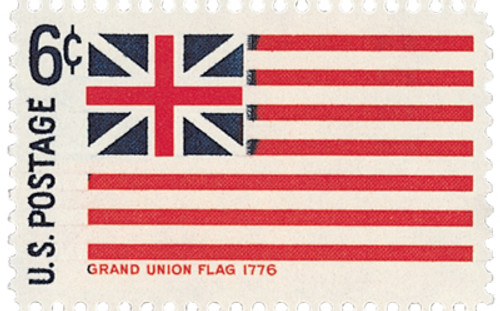
# 1354 - 1968 6c Historic American Flags: First Navy Jack
Issue Date: July 4, 1968
City: Pittsburgh, PA
Quantity: 228,040,000
Printed By: Bureau of Engraving and Printing
Printing Method: Engraved, lithographed
Perforations: 11
Color: Dark blue, red and yellow
John Paul Jones said, "Sir, I have not yet begun to fight," when his ship Bon Homme Richard engaged in battle with H.M.S. Sarapis. Jones flew the First Navy Jack during that famous battle.
Issue Date: July 4, 1968
City: Pittsburgh, PA
Quantity: 228,040,000
Printed By: Bureau of Engraving and Printing
Printing Method: Engraved, lithographed
Perforations: 11
Color: Dark blue, red and yellow
John Paul Jones said, "Sir, I have not yet begun to fight," when his ship Bon Homme Richard engaged in battle with H.M.S. Sarapis. Jones flew the First Navy Jack during that famous battle.














